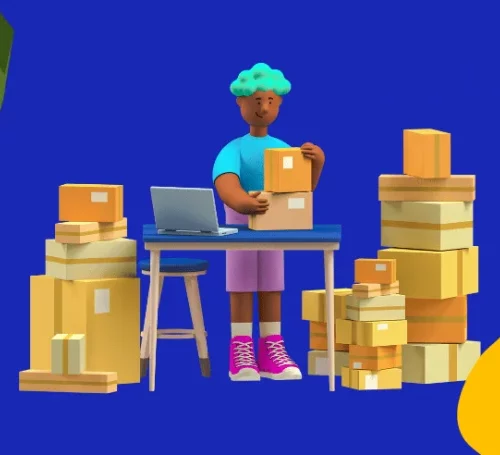Enhancing Customer Experience through Loan Origination System



Digitalization has shaken up the lending industry over the last decade in so many aspects, that banks and NBFCs haven’t had much time to address each one. A vital aspect of lending, Customer experience (popularly termed as ‘user experience’) can make or break the loan origination process for lenders. Any slip-up by companies to become more user-centric, and they end up losing that customer – because of the goodie bag of choices that customers have.
Even in a highly advanced digital age, customers struggle to cope with shifting landscapes in the lending marketplace. The reason is plain and simple – digitalization isn’t evenly spread across the industry. While some banks and NBFCs have upped the ante in ushering in more digital lending initiatives, particularly after the COVID-19 pandemic crisis, others are still reeling.
Pain Points of Customer Experience
Older and some current loan origination systems have certain user experience-related challenges that have plagued the banks and NBFCs that deploy them. Here are the main pain points:
- Inefficient Document Management: Some lenders in India have still not transitioned into paperless or at least partially paperless loan origination, and expect multiple branch visits from customers. Even with e-KYC and v-KYC initiatives, lenders still scramble to get document management streamlined.
- Awkward Usability: These days, most end-customers/borrowers tend to have direct interaction with loan origination systems through webforms and lending apps. User-interface design is a critical component of a customer’s onboarding experience that lenders could easily get wrong. From a shabby-looking homepage to complex input fields, usability is a massive challenge.
- Inconsistent Omnichannel Lending: Digital lending has shattered barriers of servicing modes – lenders offer loans through website, email marketing and mobile apps. But this has also led to inconsistencies in features/services offered between platforms, which causes friction with customers’ user experience.
- Lack of Self-Service Options: Whether it’s doing e-KYC from the comfort of your couch, or getting updates on your loan application through chatbots, numerous banks and NBFCs are yet to implement self-service initiated across their channels. This has become highly relevant in a post COVID-19 world.
- Speed, Downtime & Maintenance: An un-updated and non-transparent loan origination software can really hamper your growth in new customer acquisition. For lenders who deploy throngs of field agents, it becomes imperative to have a speedy system that doesn’t encounter periods of downtime and requires little maintenance.
Ways to Improve CX
Customer experience (CX) in loan origination is a weighty criterion that can help retain loyal customers and attract new ones. There are umpteen methods by which CX can be bettered.
1. Smart Data Collection & Analytics
Understanding customer requirements and thinking patterns is the numero uno step in improving user experience. For this, oodles of customer data need to be gathered through data points like mobile apps, website visits, clicks through search engine optimization (SEO), etc. Data like previous lending activities, credit scores and loan profiles can even be sourced through loan origination softwares for the better understanding of customers’ spending and repayment habits. Marry all this data with smart analytics solutions available on loan softwares, and you have the platform to give a great customer experience to your patrons.
Analytics play a mammoth role in today’s gig economy lending. Since gig workers have irregular incomes, it becomes imperative to have more and better data points to analyze their creditworthiness for lending.

2. New Technology Adoption
Regulations for banks and NBFCs are getting tighter, driving up the cost of borrowing. In this scenario, it helps if these companies can adopt business and operational models that are powered by new technologies. By harnessing the capabilities of Artificial Intelligence (AI), Machine Learning (ML and Big Data through advanced loan origination systems), NBFCs can lower their customer acquisition costs, de-risk existing loan portfolios and create a good value proposition for customers. Using frameworks like Angular and React, NBFCs can offer a better UI experience.
Robotic Process Automation (RPA) is an example of new technology that enables streamlining operational workflows and accuracy of credit decisioning. Using the magic wand of loan origination softwares – API (Application Program Interfaces), banks and NBFCs are able to connect seamlessly with internal and external loan ecosystems for wholesome loan offerings.
3. Self-service with Customer Support
A rising giant in the lending sector, self-service is becoming more and more convenient for borrowers. Manual support is tedious; the customer service person must call the client to guide them through the loan application process, while online chat solves such issues instantly and efficiently. Chatbots, self-service kiosks at banks, live chat on social media platforms like Whatsapp, Facebook etc. are the main arsenal for lenders to capitalize on new customer acquisition. Although these are non-traditional solutions of customer support, lenders must expand their service channels to include self-service for millennials and digital natives. Use case – customers downloading loan sanction letters directly from mobile/web app or through chat. Such conversational technologies are changing the lending landscape to devise actionable insights and supercharge client interaction in real time.
4. Streamlined Multi-channel Experience
Today’s loan origination process is fragmented across various channels – there are customers who prefer coming to the financial institute’s branch to get the in-store experience, others love online banking done through their laptops and tablets, while tech-savvy borrowers only have to touch a few buttons on their phone apps for the complete banking experience. Most lenders use a mix-and-match of these channels for origination, which although required, can sometimes lead to inconsistencies. It’s paramount for lenders to streamline their product offerings and processes across all these channels for a better experience for their customers.
A 2020 report sponsored by MeridianLink established that 85% of financial institutionsoffered online loan applications, while only 44% of them gave the option on mobile devices. Of these numbers, 66% allowed the complete loan process to be done online, and a measly 46% allowed completion on mobile. This not only goes to show how tilted the multi-channel loan origination scales are, but also the urgency of having an evenly distributed customer experience across all platforms of a lender’s loan origination system.
You May Also Like: Loan Origination – A Critical Step In Mastering The Loan Process
5. Personalize the Customer Experience
Everything else being equal, customers will always choose a lender who personalizes their experience. This doesn’t only mean offering the right kind of product for your customer’s requirements; personalization includes timely and customer-centric communication, configuring products based on the customer’s credit history and reducing paperwork/documentation for existing clients. Eg. Language localization (Hindi, Tamil, Marathi, etc.) based on the GPS location of the borrower. Entrepreneurs/self-employed individuals would also get relevant product offers based on their business needs, and their loan origination flow will also be different.
Customers will certainly feel valued if they get personalizing emails, SMS’es, alerts and greetings. Eg. Automatic SMS/email triggering if a borrower comes out while filling out a loan application online. This SMS/email would focus on pulling the customer back into the form. Many loan origination systems can integrate with CRM tools (backed by Big Data) that automate the email and SMS marketing process, allowing you to explore new business segments, while ensuring a personalized experience for your existing clientele.
6. Security, Transparency and Trust
In a digital era where AI and big data are the cornerstones of technology, data security has become a big eyebrow-raiser. The more secure your digital lending endpoints are, the more peace of mind your customer has. Another way of winning customers over is by maintaining transparency in your loan terms and conditions, and ensuring that customers fully understand them. As long as the product/service meets the customer’s borrowing needs, they get a strong sense of trust in the lender and are bound to come back in case of further requirements, or could even refer their associates to the lender. A few steps can be taken towards data security:
- Prior to getting their personal data, lenders must ensure to get customers’ consent.
- On the page where this data is collected, you must include the phrase “Your data is safe with us”.
- Lenders shouldn’t be able to see identification documents like Aadhar card on the backside, rather something like **–**–1234.
7. Understanding the Customer Journey
Giving the customer a great loan origination experience is one thing, but to do it consistently, you must understand the customer’s journey. This is done by asking some quintessential questions about the customer and the process:
- Did my product, my service and my channel satisfy the customer’s expectations?
- How well did the customer perceive the information about the financial product and documentation required for loan origination?
- What were the client’s motivations, actions and hurdles during the process?
- From application to disbursal, how much time and effort did it take for the customer? Heat maps can be used to find and analyze where he clicks, spends time, how much he scrolls etc.
- What could be the areas of improvement that could smoothen the customer’s journey the next time?
Conclusion
Be it a mortgage, an auto loan, a business loan, a gold loan, or a personal loan, giving customers a good user experience is now a priority for banks and NBFCs alike. It’s true that digital loan origination has reduced costs, improved efficiency and mitigated geographical challenges, but business sustainability will only be attained if lenders can perfect the art of CX.
Guaranteeing a spectacular customer experience, CloudBankin allows lenders to i) Automatically disburse loans within 2 minutes, ii) Disburse low ticket loans without any human intervention, iii) Capture the right user data and manage heavy-duty documentation with ease. Check out more features from here.
Frequently Asked Questions
What is commercial lending software?
Commercial lending software is used by large corporates to avail commercial loans for addressing their short-term capital needs (both secured and unsecured). It is used to originate, process, disburse, and manage loans using a unified loan origination system. It can automatically categorise loans based on their value, type, and exposure. It is a unified platform for all commercial loan products. The software is accessible to all parties involved in the loan process. It allows for automated loan tracking as well as customization of alerts and notifications. It supports core banking features through real-time integration with various APIs. The report and dashboard provide a 360-degree view of a commercial lender's operations.
What is the difference between loan origination and underwriting?
The main difference is: Loan origination, in simple terms, is when a borrower applies for a loan, and a lender approves it and disburses the loan amount to the borrower. Whereas underwriting is where the lender validates the borrower's creditworthiness against the credit policies and decides whether to approve or reject lending to the borrower. With the help of CloudBankin, lenders can manage their portfolio in a paperless way.
Which software is most used in finance?
The most common tools used in finance to quickly onboard borrowers are cloud-based loan origination software and loan management software. Since technology has revolutionised the lending sector, lenders can now access their lending platform anywhere, anytime. Other advantages of cloud-based software include the fact that it is platform-independent (using only a web browser), enhances user experience, is much easier to update and upgrade, and generally maintains data integrity. The lending process consequently becomes effective in terms of price, time, data management, and security. Currently, our software is capable of handling 12 different types of loan products like Personal loans, Business loans, Vehicle loans, Gold loan, Line of Credit, Payday loan, Micro loans, Agri loans, Loan Against Property, Micro finance, Yearly salary loans.
Related Post

How Lending Companies can disburse the loan in 10 mins
Technology has woven its magic in the 21st century across

Evolution Of Payday Loans: How CloudBankin Can Help Disburse A Loan In Less Than 5 Minutes
Many are faced with unexpected financial difficulties when a day

Why is Bank Statement Analysis important in LOS
Bank Statement Analysis - A Complete InsightThe first thing we
- Email: salesteam@cloudbankin.com
- Sales Enquiries: +91 9080996606
- HR Enquiries: +91 9080996576
After smartphone penetration, people are not watching their SMS at all. They use SMS only for OTP related transactions. That’s it.
But What can a Lender see in your SMS after you consent to them?
Lender can see income, expenses, and any other Fixed Obligation like (EMIs/Credit Card).
1) Income – Parameters like Average Salary Credited, Stable Monthly inflows like Rent
2) Expenses – Average monthly debit card transactions, UPI Transactions, Monthly ATM Withdrawal Amount etc
3) Fixed Obligations – Loan payments have been made for the past few months, Credit card transactions.
It also tells the Lender the adverse incidents like
1) Missed Loan payments
2) Cheque bounces
3) Missed Bill Payments like EB, LPG gas bills.
4) POS transaction declines due to insufficient funds.
A massive chunk of data is available in our SMS (more than 700 data points), which helps Lender to make a credit decision.
#lendtech #fintech #manispeaksmoney